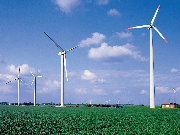 TÜV SÜD has completed type certification for the DF82-1500 wind turbine made by Chinese Dongfang Electric New Energy Equipment (Hangzhou). This type certificate is a precondition for export to overseas markets and is one of the first certificates issued to a Chinese wind turbine manufacturer.
TÜV SÜD has completed type certification for the DF82-1500 wind turbine made by Chinese Dongfang Electric New Energy Equipment (Hangzhou). This type certificate is a precondition for export to overseas markets and is one of the first certificates issued to a Chinese wind turbine manufacturer.
Type certification is a procedure, recognised at international level, for establishing that complex technical systems such as wind turbines comply with international standards. “Type certification covers review of the design, prototype testing and manufacturing inspections,” said Dr Martin Webhofer, head of the Certification Body for Wind Turbines at TÜV SÜD Industrie Service. Based on these tests, the type certificate has high informative value and is recognised as a proof and seal of quality by investors, operators and insurance companies globally.
Dongfang Electric New Energy Equipment (Hangzhou) (DENEE) is a subsidiary of Dongfang Electric Corporation (DEC) and one of the leading wind turbine manufacturers in China. The DF82-1500 turbine has a rated power of 1.5MW and is designed for use in onshore wind farms. “I am very pleased about the successful type certification carried out by TÜV SÜD,” stated Zhu Yuanchao, vice president of Dongfang Electric Corporation. The certificate is a precondition to exporting this type of wind turbine to other countries. DECNEE’s key target markets include India as well as emerging countries in South East Asia and the Middle East.
“Fast communication and efficient project management by both TÜV SÜD and DENEE were the keys to the rapid completion of this project,” emphasised Dr Alexander Kupzok, project manager at TÜV SÜD. In this context, the ‘wind team’ of TÜV SÜD China acted as an important interface. “The interaction between the competence centre in Munich and the local teams on-site at the national legal entities, provides our clients with considerable time benefits and competitive edge,” added Dr Webhofer. “After all, time to market is critical for business success in growth industries including wind power.”


